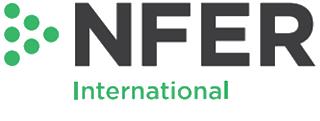Expanding the use of e-assessment in Rwanda
Rwanda’s ICT in Education Policy (2016) states that ‘technology can be used to improve the quality of teaching and learning materials through the use of digital learning resources’.

NFER worked with the Rwanda Education Board (REB) between 2017-2019 to help them achieve this objective.
Over the course of the two years NFER carried out a range of advisory and capacity building services. These included:
- conducting a study on teaching and e-assessment in Rwanda to scope the possibilities for the use of ICT in assessment
- providing recommendations for developing capacity to use e-assessment and technology to support teaching and learning
- expanding knowledge of assessment principles and improving the e-assessment system
- expanding the coverage and use of the e-assessment system
- overseeing the creation of e-assessment materials
- helping the Rwanda Education Board move towards making its e-assessment system self-sustaining.
Technical Advice
In delivering this work, NFER worked closely with the Board’s officials, UNESCO staff and partners in two phases. The first phase consisted of research into e-assessment development options combined with consultation with major stakeholders in Rwanda, taking into account key aspects of the context such as the readiness of schools and ICT supply. The results of the research were published in a report offering a menu of e-assessments with an analysis of their suitability, given the national ICT developments.
Please view NFER’s report on e-assessment development options in Rwanda.
Capacity Building
In the second phase in 2019, NFER together with Neil Butcher and Associates delivered a course to teachers, Rwanda Education Board officials and e-tutors on the development of robust, valid assessments for formative classroom use. Participants were trained in formative assessment, validity and reliability, and the principles of test construction. After the course, participants were supported, during a three month period, to create new assessment materials for the e-assessment system. In tandem, improvements were made to the reporting and analysis functions of the e-assessment platform.
